Uncertainty, it’s the ever-present excuse to shy away from trying something new with your brand and marketing. Whether it’s global current affairs or internal company concerns, the lack of predictability in the world makes it intimidating to try novel creative concepts. But uncertainty should drive creative exploration rather than limit it. Keeping your marketing team ready to try new things, think on their feet, and move forward with well-planned ideas keeps your brand adaptable so that it can thrive in a world of constant change. The process that’s required to discover bold ideas not only ignites intelligent thinking, but it pushes your team’s collective creativity as well.
At first, telling leadership they should or need to take risks with creative output might appear mockingly heroic. Whether it’s revamping your website, playing with new taglines, or incorporating different design elements, all of it can sound costly and time-consuming. But does your brand have the time and money to be irrelevant and boring?
Creative risk-taking isn’t as hedonistic as it first appears when it’s calculated risk-taking. We can’t scrap brand guidelines or forget where we came from. Calculated risk-takingis about maintaining authenticity and relevance while forging new paths to your audiences’ hearts. The benefit for clients is that it distills what’s most captivating about their brands while igniting the kinetic energy that keeps audiences intrigued.
Finding the Time
Fostering a healthy process for ideation is a good place to begin taking calculated risks. Actively seek opportunities for your creative team to branch out of their comfort zones. Advertising, marketing, and branding teams intrinsically want to create—they feel rewarded and invigorated when you unleash their minds to discover. Brilliant ideas need a place to exercise so that they can grow. Opportunities for these brainstorming endeavors won’t pop up on their own. Set aside time to explore those concepts that you’ve been kicking around.
A space free of breakneck deadlines is ideal. The goal of these brainstorming sessions might be more analytical than a lot of the daily tasks you ask of your team. Style guides have some good avenues to go down if you’re stumped on topics to focus on. Perhaps there’s a brand pillar that everyone in the company seems to interpret differently—use that as a topic and spend a meeting mapping it out. This could lead you to questions that your audience has been wondering about too. Team building and growing trust are two biproducts of these types of brainstorming meetings that can help you justify the time and resources necessary for creative play time.
Keep it Fun
People need to feel comfortable to get wild, and the best ideas fall somewhere between the absurd and the obvious—to get there, make your team feel like they can voice anything and everything. Some argue for shelving every idea (even the really bad ones), no matter how off-the-wall they might seem initially. Best of all, you’re elevating trust through these processes when you let people get weird with ideas. Humans want to feel like they’re discovering and not just going through the motions. A culture of trust makes it easier for people to share, and this allows decision-makers to have the information they need to operate with an analytical perspective, keeping risks calculated and not a guessing game.
If you need help creating an ideation process for your brand’s creative concepting and execution, hire an agency. Find one that’s been around for a while. Older agencies have weathered more changes than the younger ones and have seen what works and what doesn’t. You might also find that they care more about client success than winning awards for themselves.
Listen to Creatives
Whether you’ve hired an agency or have a robust in-house creative team, listen to your expert writers and designers with patience and an open mind. It’s easy to fall into the same thought patterns in creative reviews. Hiring intelligent people and not listening to them isn’t the best use of your time. It’s like buying an expensive candy bar, then taking the time to dissect all the peanuts out, when all you originally wanted was a few peanuts.
Are You Playing it too Safe?
There’s no definitive checklist for knowing if you’re playing it too safe with creative output, but a positive place to begin is asking yourself, “Are we doing the same thing and hoping for different results?” This notion is raised in famous quotes and countless motivational talks, but it’s rarely embraced with sincerity. Posing this question productively is challenging because identifying what “doing the same thing” looks like can feel subjective. The purpose of cultivating a culture where ideas have room to play, creatives are listened to, and ideation is fun, supports fearless conversations. And this sense of fearlessness is essential for healthy discussions that lead you to the exploratory creative work that your brand’s audience is looking for.
New ideas can be scary and, at times, even sound foolish. The creators of one of the most successful video games of all time had to go to their boss and say: I have an idea for a game where mustachioed, Italian plumbers hunt down mushrooms in plumbing while fending off turtles in hopes of finding a princess in the piping. Super Mario Brothers is now a household name despite how absurd that idea sounds. Learn to see creatives’ new ideas as opportunities to explore more and dig deeper. Stay fearless while brainstorming. Grow trust with your creative team through team-building ideation time and, most importantly, don’t take the risk of playing it safe.
These days, change feels like it happens at an exponential quantity and pace. It’s no secret that this puts brands in a tough spot. Brands, after all, are supposed to stand for something, but they also need to evolve with the rest of the world. That’s where agencies come in.
A Paradox at Play
When uncertainty abounds, there’s a tendency to flee to certainty. A boon on the one hand, brands can act as sanctuaries of consistency and reliability in times of uncertainty. Go to any Marriott in the world, and you know exactly what to expect. On the other hand, tastes and expectations evolve. Brands can’t be complacent or dig in their heels against change. They must embrace it.
Take Nike. Their “Just do it” slogan continues to resonate since it was rolled out in the late 1980s. Nick DePaula, an NBA feature writer, explained to NPR, “Not only was the slogan great, and also approachable and vague enough that anybody could apply it to whatever it was they were trying to aspire to do.” They’ve used it to inspire more empowerment and social progress for gender and racial equity, among other causes.
Nike managed to walk the tightrope of staying consistent to their brand while morphing it at the same time. You can bet their agency of record played an essential role in helping them navigate that paradoxical truth.
How Agencies Help Brands Navigate Waves of Change
An Objective, Knowledgeable Voice
Agencies have the unique position of being simultaneous insiders and outsiders. They can see from the inside: they understand the business and the brand, they understand the risks and the opportunities. And they see the brand from the outside: as consumers see it, as competitors see it. As a result, they’re able to stay more objective and clearer headed, seeing facts through an empathetic lens from the points of view of both the business and the consumers.
Uncover Insights and Stories within the Data
Data drives much decision-making today. As helpful as it is, it’s only part of the story, especially because much data is historical and lacks context. The numbers and charts can’t help if you can’t glean the narratives within them. An agency can help you take your data and turn it into a cohesive story with the development of personas, competitive analyses and trend reports. This helps you make your data actionable. The closer your predictive data can be to real time, the more empowered you’ll be to make impactful decisions.
A Flexible, Opportunistic Mindset
Most agencies are like speed boats to a brand’s tanker. They’re able to turn more quickly, speed ahead, do reconnaissance and zip back to the tanker. They can spot a competitor’s misstep and explain how the brand can take advantage of it. They can encourage more innovation and nudge brands to push the envelope in both small and big ways. They help the brand avoid falling into autopilot mode, coasting on its size, by pushing it to new horizons. Agencies help free up brands to focus on what they do best—run their business—by taking on the marketing.
What Brands Should Look for in an Agency
Agencies are people, so brands need to find one with the right talent that’s forward-thinking, nimble and integrated. Here’s why.
With unprecedented change afoot, challenging the status quo needs to happen more rapidly and frequently than ever before. To do that, brands need to work with agencies who are focused on the future. Looking ahead means being curious in the here and now by devouring information, connecting dots in new and unusual ways and seeking out opportunity at every possible turn.
Next, agencies need to be both nimble and level-headed. It’s not enough to simply respond; they also need to sift through mountains of information to separate what’s important from what isn’t. Without clarity and purpose, nimbleness can quickly devolve into chaos. For example, Heinrich strategists know how to keep their eyes on the destination and that there are any number of ways to get there.
Last, look for an integrated agency. While it’s tempting to piecemeal your marketing efforts across specialty agencies—paid media here, social there—an integrated agency can connect dots across your entire marketing ecosystem. Writer David Epstein argues that generalists can perform better in uncertainty, saying, “The more varied your training is, the better able you’ll be to apply your skills flexibility to situations you haven’t seen.” An agency with both depth and breadth of in-house talent, like Heinrich has, is the same. Brands can tap into that diverse, coordinated skills set to better ride the waves of uncertainty as they occur.
The right agency partner awaits, one that’s born for business and can lead your brand from where it is today to where it needs to be tomorrow. That’s how Heinrich shows up—every single day.
Most creatives agree that a naming project is one of the best—yet most challenging—parts of the branding process. And, while it is extremely fun and satisfying, naming can also be slightly nerve-wracking. Why? Think of it this way—it’s the first step in taking your client’s brand off the page and into the world, the first thing people see when they interact with it, and the maker (or breaker) of first impressions. That’s a lot of firsts and a lot of pressure.
Luckily, Heinrich has a trusted naming process that combines a ton of insights and strategy, a bunch of research, and a healthy dose of branding expertise.
Step 1: Discovery and Strategy
Know who the brand is before you name it.
The first step in any successful naming project is to not start with naming at all. You’re probably sitting there thinking, “Wait, I came here to learn about how to name a brand and now you’re telling me I can’t?” Here’s the thing. You can’t name a brand if you don’t know who the brand is. So, if you don’t have a brand strategy yet, you need to back up and start at step one of the overall branding process: the client discovery session.
During this session, you’ll sit down with your client and get to know everything about their brand—from the nitty-gritty details to their preferences and vision. These are the learnings that will influence how your brand strategy is created and, in turn, how that strategy influences the name.
Hot tip: Be sure to reserve time during this conversation to ask specific naming questions. This will help you determine what kind of name your clients are drawn to and why. To get the conversation going, come prepared with a list of different naming styles and structures (like the ones below) and see what piques their interest.
Types of Naming
When you look up different types of brand names, you’ll find that there are many opinions on how to categorize them. But when you get down to it, most names can be put into the following structures and styles. With that, there is bound to be some overlap. For example, PayPal is a descriptive name that uses both an alliteration and a compound structure. Whereas Mailchimp is a playful name using a compound noun of real words. Keep in mind that your names do not have to fall neatly into one of these buckets, but getting input from your clients can help add some spark and guideposts to your brainstorming process.
Name-Structure Examples
- Alliterative: American Airlines, Best Buy
- Acronym: IBM, AT&T
- Compound: PayPal, Coinbase
- Real Word(s): Dove, Target
- Misspelled: Froot Loops, Lyft
Name-Style Examples
- Playful: Mailchimp, Tushy
- Metaphoric: Amazon, Tinder
- Historical/Origin: Saks Fifth Avenue, Dairy Block
- Founder: Disney, Ben & Jerry’s
- Geographical/Location-Based: Cisco, Florida’s Natural
- Coined: Verizon, Pantone
- Descriptive: Whole Foods, Comedy Central
- Invented: Kodak, Häagen-Dazs
- Combined: Fabletics, Pinterest
Step 2: Research and Write
Turn your strategy into a creative distinction.
Taking everything you learned during the discovery session, it’s time to get to work. To start, consider which types of names your client is interested in, consult the brand strategy for insights and themes, and use all this information to create some naming buckets for yourself.
Then, dive in.
Go down the research rabbit hole.
See what competitors are doing and why.
Search for interesting nuggets and good stories. For rich histories and curious details that will make the brand stand out.
Leave no Internet stone unturned.
Looking for a name with a geographical tie? What about something metaphorical that connects the brand ethos to its vision? See where those roads lead.
Use your research to write 10 names. Then 10 more.
Think of ways to modify, combine, and invent.
Keep writing, and keep going back to the strategy.
Continue pushing until you have a handful of names that you’re confident fit with who the brand is and what it stands for.

Here are some examples of names Heinrich has developed for our various real estate branding clients. Watch for them around the Denver Metro in the coming year.
Step 3: Narrow and Vet
Lots of names are good. Instead, let’s be smart.
After you’ve organized your massive list of name options and why they make sense for the brand, it’s time to narrow down to your top five best options.
Before you begin, let’s define what makes a “good” brand name. Like most artistic endeavors, this can be a bit subjective. But if you ask us (and you should since we have lots of experience), it isn’t just about coming up with a “good” name, it’s about coming up with a smart one.
Here are nine things Heinrich considers when deciding which names to present to our clients:
- It’s memorable.
- It’s distinct and not being used within the competitive landscape.
- It has meaning, or meaning can be created around it.
- It fits your strategy and embodies your brand positioning and personality.
- It’s accessible; your customers can easily learn to say it, spell it, interpret it, or Google it.
- It’s appealing and resonates with your target audience.
- It’s appropriate, not appropriating, and avoids negative concepts.
- It sounds good.
- It looks good.
Obviously, a few items on this list are, as previously mentioned, subjective. So how do you avoid having you or your client choose a name based on your personal preference? You vet. If you don’t have the budget or resources to hold an official focus group, create an informal one on your own. Find people in your social circle who fit the target audience of this brand and ask them what they think. Take notes, be honest with yourself, and kill your darlings. That super-cool name with a great rationale that, deep down, you know is way too complicated or hard to pronounce? Nix it.
For a real-world example, consider Heinrich’s recent real estate branding project for a Trammel Crow and Greystar apartment complex in Denver’s Central Park neighborhood. For this name, we were inspired by a few things:
- The neighborhood where the property lives was once home to Denver’s Stapleton International Airport.
- Our strategy informed us that this brand’s audience was looking to enter a new chapter of life filled with movement, growth, and discovery.
The result? Elevon. Originally a term for aircraft surfaces that combine the functions of two instruments for pitch and roll control, the name Elevon was clearly inspired by the geographical history of the area as well as encouraging residents to live a life in motion they so desire.
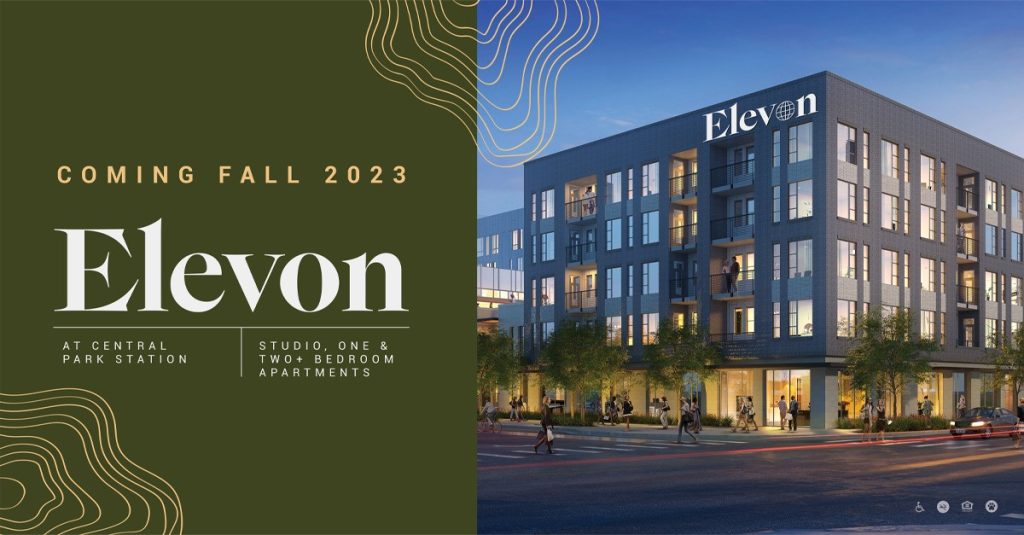
Step 4: Present and Select
Sell the story and the strategy.
Now that you’ve narrowed down your favorites, it’s time to share with the client. One of the best ways to get your client excited and on board with what you’re proposing is to put together a well-crafted presentation. Don’t just email your hard work to them and hope for the best. Instead, start by reviewing the approved brand strategy as a refresher, and then move into sharing each name. Be sure each option is presented with a strong rationale and background so the client can understand the story and meaning.
Hopefully, the client will love what you’ve come up with and immediately select a name. But if they don’t, you can either head back to your original list to see if there are any other options that align with their feedback or go back to step two and give the whole thing another go.
So how do you make a name for yourself?
First and foremost, know that a brand name is much more than words on a page or logo on a website. Ultimately, a name needs to embody the essence of the brand and resonate with its target audience in a way that makes them want to be a part of the story. It’s a daunting task, no doubt, but Heinrich is clearly passionate about the process and ready to help. To get started, send us a message, or give our branding team a shout at hello@heinrich.com.
CASE STUDY
Simplifying
healthcare
complexity
WORK
ilumed
PROJECT
ACO Reach — A New Medicare Model
SERVICES
PROVIDED
B2B Marketing
B2C Marketing
Strategy
Branding
SEO
Web Development
Thought Leadership
Media
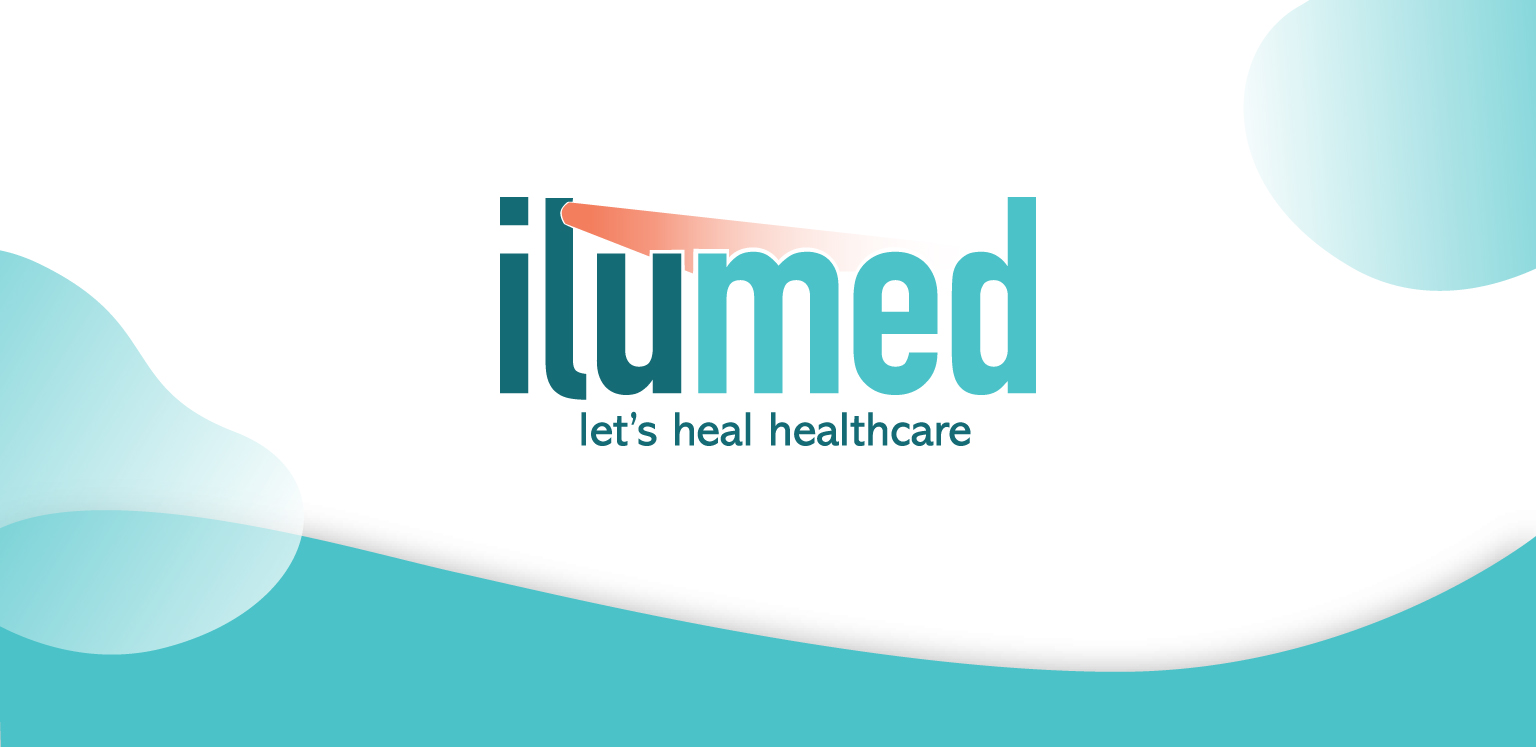

The need
When ilumed had the ambitious task of introducing a new Medicare model, we crafted a joint B2B/B2C marketing strategy designed to simplify complexity and connect on the human level. We leveraged functional and emotional audience insights to make the model accessible and showcase ilumed’s value proposition to providers and patients alike, proving the power of balancing empathy with clarity.

What we did
The new model warranted a new website and content strategy. Our digital and creative teams focused on building a best-in-class website experience that simultaneously educated and engaged B2B and B2C audiences.
SEO played a key role in the new website copy and content strategy, helping to drive organic search results and position ilumed as a top-tier ACO REACH thought leader. We capitalized on ilumed’s combined 300 years of healthcare experience to create ghostwritten articles on every aspect of ACO REACH, from care delivery to financial stability, healthcare operations to health equity. We used content as a lead magnet for providers weighing which Medicare model to enroll in.
The Results
Providers fuel ilumed’s path to profitability. Having more contracted ilumed providers means serving more beneficiaries. At the same time, providers must clear a high bar to participate in the ACO REACH model. So we doubled down on attracting qualified provider leads to the site and saw a 37% increase in users and a 27% form-fill conversion rate, which led to almost one and a half times more year-over-year beneficiary growth.
27%
form-fill conversion rate
146%
year-over-year beneficiary growth
WHY THE CLIENT SMILED

“The Heinrich team killed it and I’m excited to see how we moved the needle this year.”
— Anthony Layfield, AVP at Humana
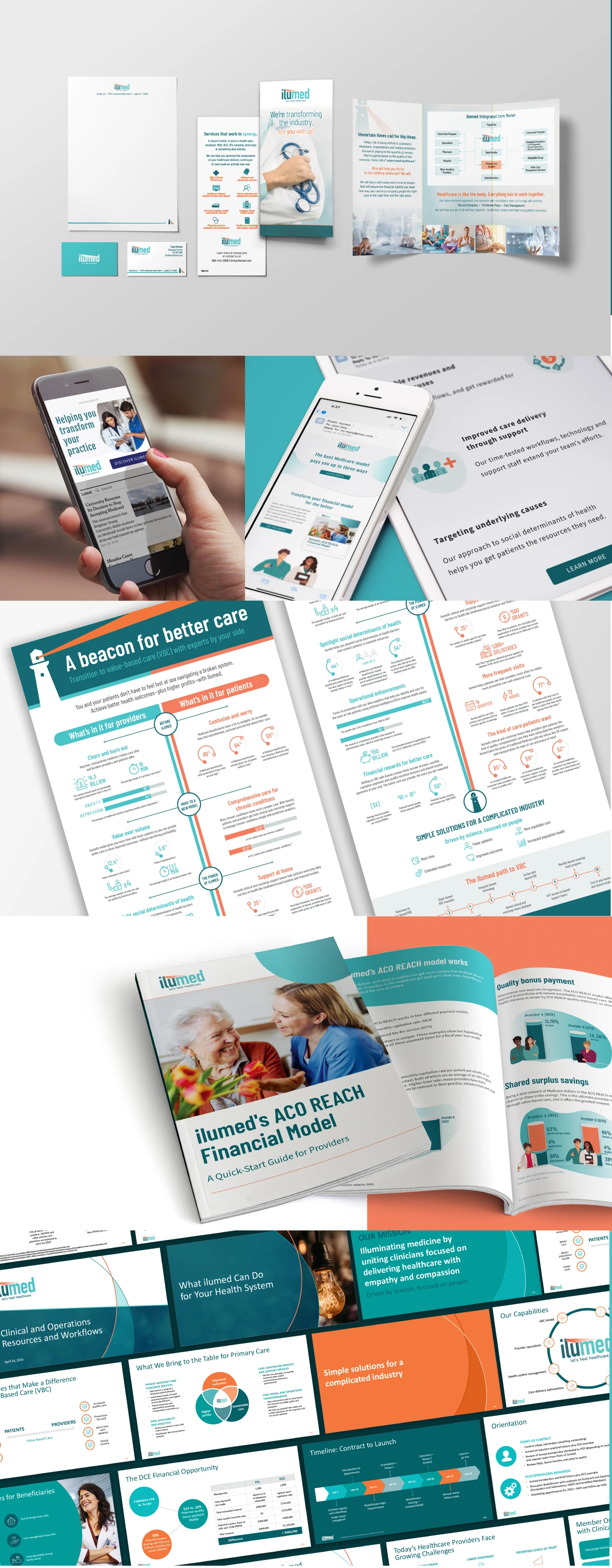
THE FULL
story
A new welcome mat
Healthcare providers and patients face the same challenge: a broken healthcare system. For providers, that means working harder for less money and worse outcomes. For patients, it’s worse experiences and outcomes for higher costs. ilumed heals healthcare from the inside out by creating more sustainable revenue streams, improving healthcare delivery, addressing health equity and reducing costs.
We saw that a new website would give us the chance to tell a new, simplified story, laying out a warm welcome mat for providers and patients by showing ilumed’s unique approach to healthcare delivery.
We developed a clear, accessible voice, speaking to providers’ and patients’ biggest pain points and how ilumed solves them. We brought ilumed’s commitment to empathy and data to life with succinct, yet compelling, copy that feels personal.
We designed the site to showcase ilumed’s expertise and commitment to patients. Animations and interactive elements deliver the story on ACO REACH and ilumed in bite-sized moments. Illustrations and iconography give the site a hand-drawn feel, subtly showing ilumed’s commitment to care in action.
Shifting provider’s minds and practices
Getting providers to pay attention is no easy feat—they’re so busy working in their practices they have almost no time to work on their practices. So we decided to harness the information that’s only in the ilumed team’s head when it comes to improving provider operations, finances and care delivery. As a result, ilumed has become a go-to destination for high-value, original content providers want and need to sustain their practices and improve patient outcomes.
We make it happen by interviewing ilumed’s internal subject-matter experts and drafting thought-leadership articles on their behalf. We take on the heavy lifting developing and executing the content marketing strategy so the ilumed team can focus on what they do best—supporting providers and patients. Meanwhile, ilumed’s leaders gain credibility and recognition in the sector as trusted experts in the ACO REACH model.
Powering ilumed’s position
Heinrich enhanced ilumed’s brand positioning with thoughtful, human-centered design, messaging and thought-leadership content. We used strategic audience insights, along with SEO, not just to move the needle on ilumed’s profitability but to supercharge it.
See the latest
Ready to talk shop?
CASE STUDY
One campaign.
One jingle.
52 million impressions.
WORK
WYDOT Governor’s Council on Impaired Driving
PROJECT
What’s Riding On It Campaign
SERVICES
PROVIDED
Strategy
Creative
Video
Media


The need
Colorado’s northern neighbor has a problem, and they want to fix it. As the state with the nation’s highest rate of drunk driving deaths per 100,000 people (according to the National Highway Traffic Safety Administration), it’s clear something in Wyoming needs to change. Unfortunately, many Wyomingites reportedly think they’re okay to drive after drinking 1–2 beers but given the average BAC (at time of DUI arrest) is double the legal limit, people are clearly underestimating their level of intoxication. The silver lining? Even though this culture of DUI tolerance exists, 85% of residents see this as a serious issue within their community. Which is why the Wyoming Department of Transportation Governor’s Council on Impaired Driving enlisted Heinrich to create a campaign that would increase awareness of impaired driving to hopefully decrease incidences of crashes, injuries, and fatalities caused by alcohol impairment.
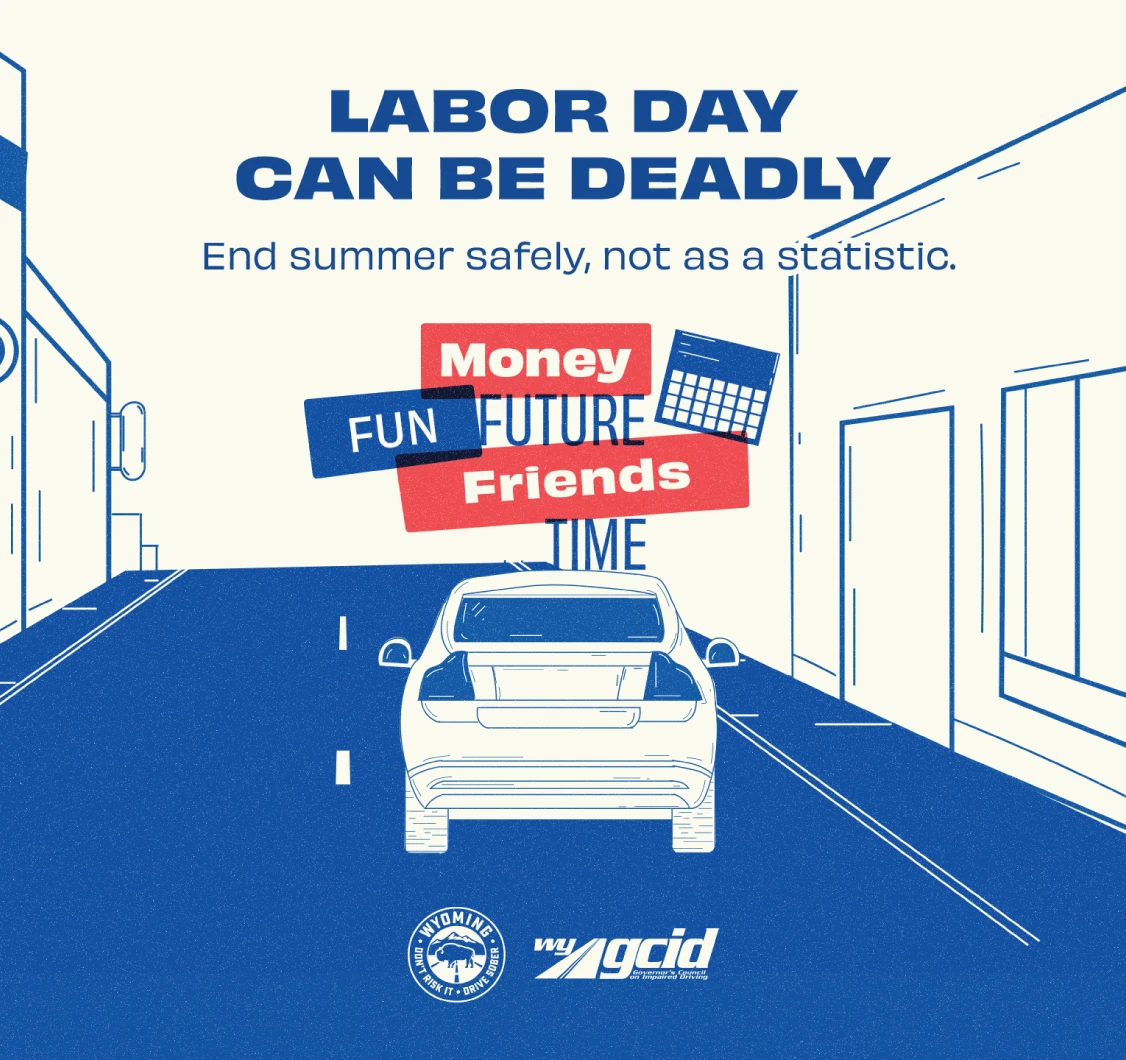
What we did
Getting people to change a culturally accepted behavior is a challenging task. Before we could even begin our creative concepting, we had to figure what—if anything—would motivate our audience to stop driving under the influence. So, we asked them. Through our six statewide listening sessions, we learned directly from Wyoming residents which factors would make them think twice before getting behind the wheel after consuming alcohol. When it came down to it, family, career, freedom, and duty topped the list. We also learned that 50% of fatalities in WY involve non-residents, and we need to target our campaign at tourists, as well as people who are just passing through, such as commercial truck drivers. Armed with these insights we created a campaign (and a damn-catchy tune) that included video, radio, digital, and OOH aimed at changing social norms while encouraging people to ask themselves, “What’s riding on your sober driving?”
The Results
Using a media buy focused on reaching audiences 21+ statewide, with an emphasis on counties with the highest incidences of impaired driving, our non-threatening-yet gets-you-thinking campaign made quite an impression. 52 million of them to be exact. And the cherry on top? Our client even made our jingle his ringtone, (which we’re sure his coworker’s loved).
52M
total impressions
WHY THE CLIENT SMILED

“This is one of my favorite Heinrich campaigns. Right on point and a catchy song, I can’t wait to share these! I’m still humming it to myself…”

See the latest
Give your brand a glow up
CASE STUDY
Setting a
foundation
to last
WORK
Trammell Crow Company
PROJECT
Elevon: Commercial real estate branding
SERVICES
PROVIDED
Research + Strategy
Brand Positioning + Messaging
Naming
Collateral
Social Media
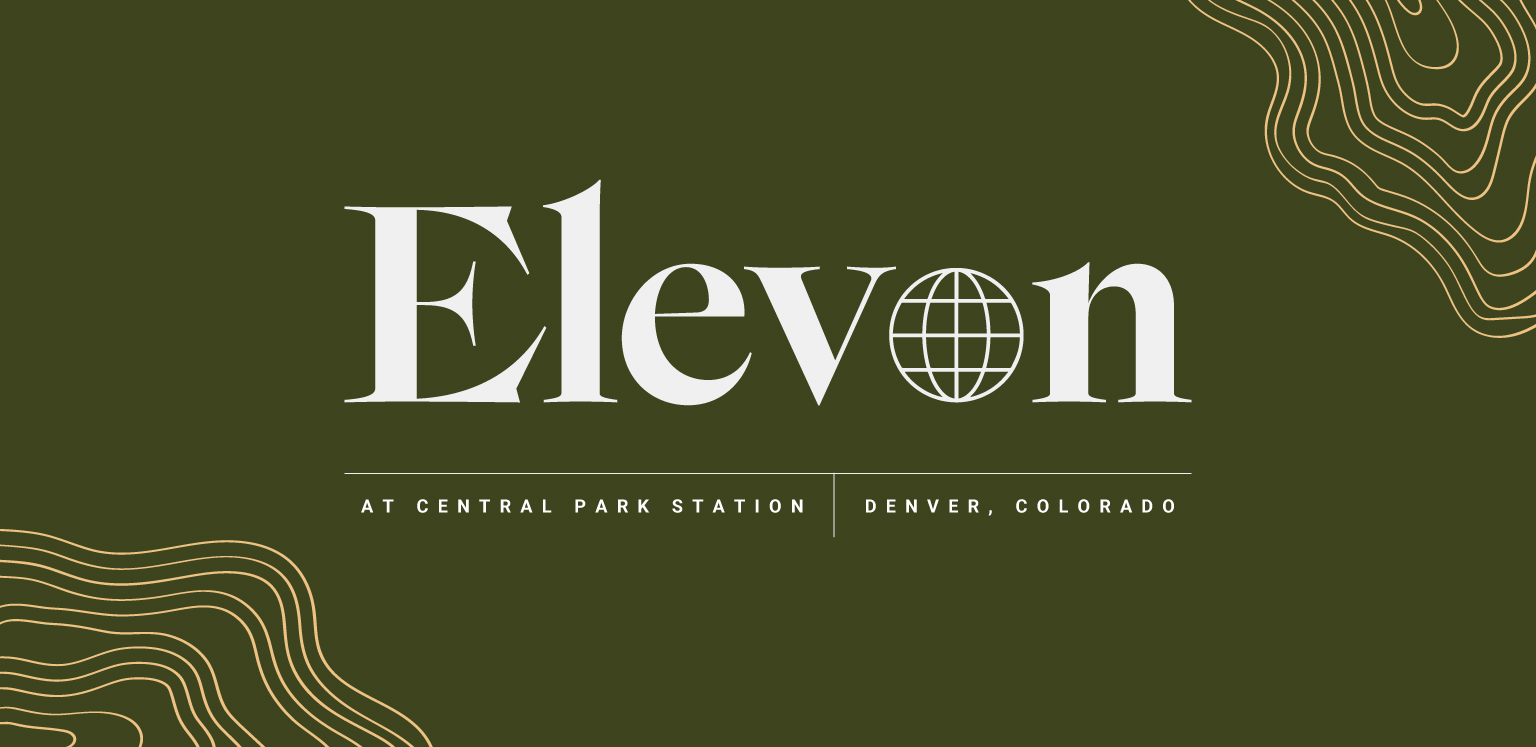

The need
The Central Park neighborhood was once home to Denver’s international airport, and when that moved out of town, the area became known as a quiet place to raise a family. But with a new light rail stop, budding brewery scene, and robust restaurant and cafe options, this neighborhood is now brimming with opportunity and connectivity to town and country, providing more opportunities to a wider variety of people. Trammell Crow Company knew that and came to Heinrich for help with everything that would get that new story to the masses, including brand strategy, naming, verbal and visual identities, website development and channel executions. Seemingly straightforward (and fun), Heinrich jumped at the chance. The added challenge? Changing perceptions and showing Denverites that Central Park neighborhood wasn’t just for families anymore.
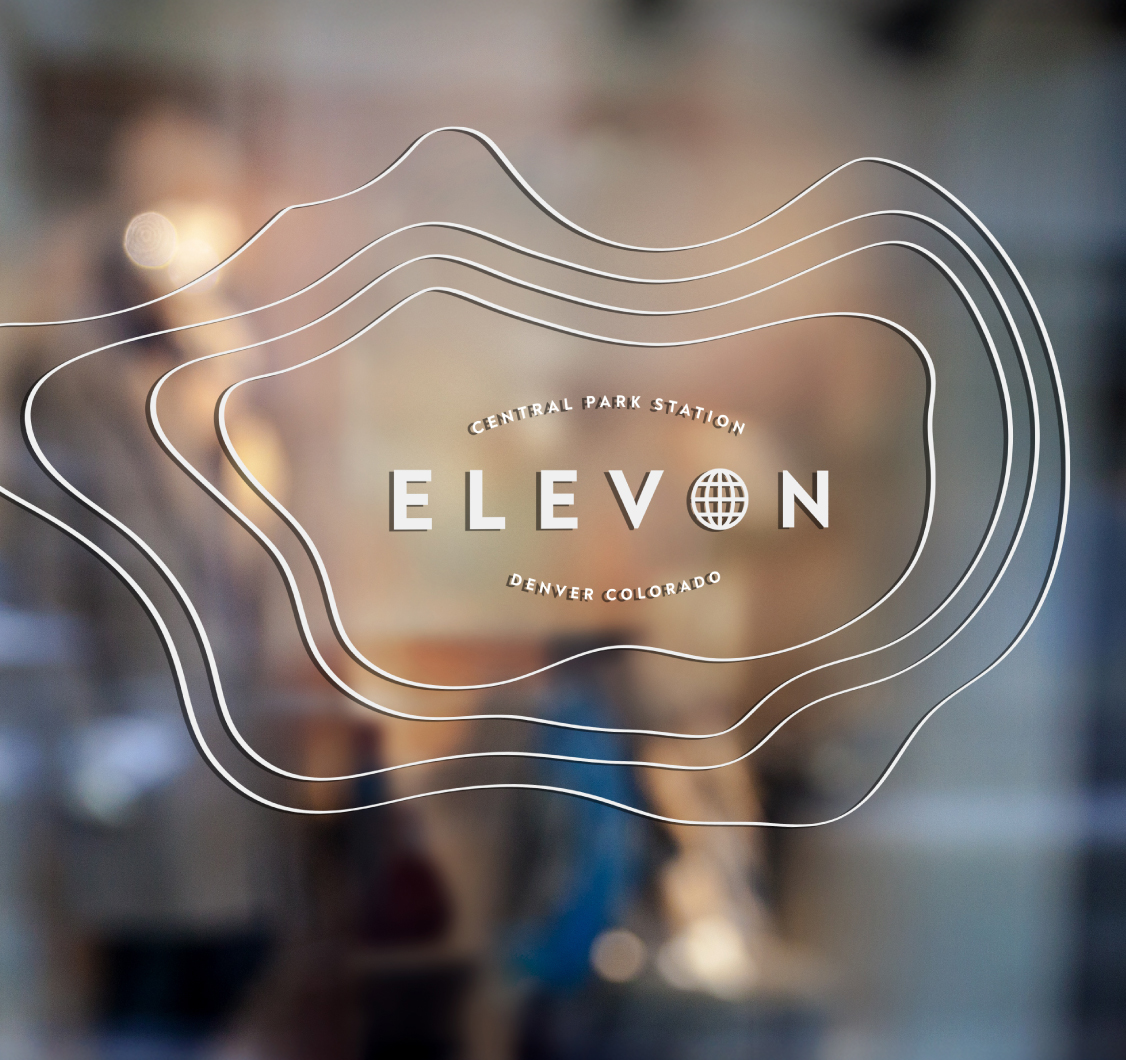
What we did
To get people excited about this locale, this brand had to inspire them away from Denver’s saturated, downtown apartment scene. With soaring competition, we focused on what matters to the people who prefer living in buzzing parts of town—a sense of spontaneity. We conveyed a bold statement to renters who worry that practical decisions could lead to a stagnant life, that these apartments hit the sweet spot of living a life in motion. Sculpting a brand strategy through research, competitive analysis and audience insights, we carved out intricate personas, positioning and territories. Using this information, we named this elegant, yet approachable community Elevon as a creative nod to the neighborhood’s historic connection to aeronautics. While always asking ourselves what would enchant culturally vivacious residents to flock to this side of town, the brand the visual and verbal identities took flight, and became enlivened with the tones, hues, and confidence necessary to create a story worth telling, Community collateral and signage was an opportunity to understand the neighborhood even better, as we had to ensure that every detail suited the apartments’ surroundings. And with beauty and precision, we landed on brand guidelines that are worthy of a window seat.
The Results
More important than winning Bronze in the Denver One Club Awards (which is pretty darn important), our client fell in love with the Elevon brand and how we’ve given the apartments wings to fly above the competition. Elevon has since been an inspiration for Trammell Crow Company as pre-leasing of the property is underway and is exceeding expectations.
Like any successful partnership, the process was equally rewarding creatively, revealing more about the spirit of the brand than we had anticipated—the surrounding community was an irreplicable source of inspiration.The up-front research and collaboration were particularly paramount to the brand development process, and the success of Elevon hinged on experience-laden tactics and laid the foundation for this brand to set itself apart in a category with ambitious competition.
WHY THE CLIENT SMILED

“Thinking of working with Heinrich? Do it! If you are looking for an agency to provide tight strategy, beautiful creative and to make your life easier I recommend Heinrich for the job.”
— MICHELLE VIOLANO REGIONAL MARKETING MANAGER, GREYSTAR

THE FULL
story
A deeper look at Elevon’s branding
With steep competition, we set out to showcase Elevon as a place to enjoy spontaneity at your doorstep while fueling wonder for what’s around the corner—a concept we hadn’t seen from other luxury apartments. Experience in real estate has taught us that location context is everything on these branding projects and the surrounding community of the Central Park neighborhood was an irreplicable beacon, guiding us along the way. Union Station and DIA are easy to get to thanks to the light rail stop and there’s an abundance of bars, cafés, breweries, shops, and hiking and biking trails. These opportunities and conveniences meant the world to our audience, and living a life in motion was paramount to their happiness and sense of self. So, we captured that essence, with style.
Strategy that puts life in motion
A sound strategic brand foundation is always a must, but especially so for real estate. Longevity is everything. Heinrich was searching for a balance between honoring the neighborhood’s legacy with its blossoming future. We started by analyzing the market, poking holes in what’s obvious and peering into what other real estate brands had been too timid to explore. We got to know the market and target audience like a neighbor, and a distinctive opportunity revealed itself: Heinrich needed to push this notion of living a life in motion even deeper. For our audience, a life in motion is lived in both a physical sense like access to activities (big in Colorado), and then, in an emotional sense when it comes to feeling a sense of fulfillment and optimism. We positioned Elevon as an incubator of a life in motion, whatever that sense of motion might look like for each resident. The name, voice, and story that followed reflected the sentiment that these homes can be both destination and departure points of for residents’ lives.
A name worth writing in stone
Originally a term for aircraft surfaces that combine the functions of two instruments for pitch and roll control, Elevon fosters a sense of cohesion to help residents keep their footing with work and all that Denver life has to offer. But how did we get to a name that encompasses all that?
Naming real estate takes a very nuanced, special creative skill set. And when a name must be written in stone, literally in the case of real estate, it must be as timeless and strong as the brand and building which bear that name. And we understood how much Trammell Crow Company was entrusting with us on this project. Heinrich researched and brainstormed thoughtfully to tactfully come up with a name. For real estate, a name must encompass culture, context, history, and sense of place. We might not have anthropologists on staff, but we have plenty of creatives that can research just as well to create a name that lasts.
A visual and verbal identity as inviting as a neighbor
We captured a very special sentiment with this brand: Elevating the fulfillment that comes with sophisticated adventure—Elevon is where you launch into a way of life you cherish and the future you desire. So, how does that come alive through tone, imagery, and style?
Inspired by the take-off of an aircraft, the hero logo uses a font that has an upward motion typeface. With earthy, elegant brand colors and an intelligent but friendly tone of voice, residents know that they have a place to love, kick up their heels and reset for their next adventure. Going deeper, Elevon’s brand colors were selected to create a weighted balance between classic and new—honoring the duality between legacy and future for the neighborhood and residents. Additionally, we leaned into the history of the neighborhood and aircraft inspiration throughout our language choices: typography and visuals, using control panel elements like classic symbols of mapmaking contrast, and language that continually pushes the forward moving, life-in-motion strategic narrative.
See the latest
Ready to
bump elbows?
Let’s face it: traditional advertising can only take your healthcare brand so far. At some point, you need to go beyond advertising to build a local reputation—to see and be seen. This is what brands like Monster and Red Bull understand so well. They’ve got two concepts down to a science: 1. bringing positive associations; and 2. encouraging trial and affinity with their brand. That science is called grassroots marketing, and it’s about developing personal connections with potential audiences in the local community.
Where Healthcare Gets Grassroots Marketing Wrong
Too many healthcare organizations think grassroots marketing is about writing sponsorship checks or throwing together last-minute activations. But you can’t just provide a logo or a stack of brochures and call it good. Or scramble to gather some giveaway items together for an event that weekend. Either approach is a waste of time and money.
Just as dangerous for healthcare brands is ignoring and devaluing grassroots marketing all together. The lure of “tangible” results from traditional marketing and advertising channels can be seductive in contrast to measuring grassroots. Figuring out full-funnel attribution and whether leads converted into patients, members or customers can be difficult, but what your brand risks by not doing grassroots marketing is even more important: conveying your values and story. The best way to do that isn’t through tactics like ads or emails alone but also up close, person to person. Nothing beats that one-to-one connection, especially in healthcare where trust and relationships are paramount.
What Healthcare Can Do to Increase Grassroots Marketing Scale and Effectiveness
Create a Strategy
Healthcare brands need to be intentional with their grassroots marketing efforts, starting with key questions of why, where, when and how:
- Why are you doing grassroots marketing? To announce a new location, to grow our patient panel or membership size, to deepen connections in the community?
- Where will your target audience be, and which events make the most sense for you to have a presence at?
- When will you focus on grassroots marketing? Leading up to and during an opening? As an ongoing effort?
- How will you ensure brand consistency and maximum efficiency? How will you empower local markets, especially in rural areas? How will you compliantly track leads?
Here are some tried-and-true tips:
- Develop criteria that establish which types of events you do and do not want your brand associated with.
- Ensure events are close enough to your location/market that they make sense, and they are something your target audience will attend. Let’s say your practice is located about 20 miles south of a large metro area, and most patients live within 3–5 miles of the clinic. While a large festival downtown is a large draw for those who live throughout the area, chances are you’ll meet more people who live further from your clinic than those who do. You may have more luck with a smaller, but more local event instead.
- Consider whether owned events, events you host yourself, make sense for you or not. For a provider with a community space, you could leverage health and wellness talks from providers as a regular, ongoing series.
- Develop event kits, programs in a box and other templates for turnkey, grab-and-go activations. Your materials (signage, collateral and giveaways) should be simple and sturdy enough for a wide range of activations. Be sure your collateral will work for the event location. For example, digital activations may not make sense for daytime outdoor events where sun and glare can defeat the purpose.
- Be sure to think through what types of activities and giveaways will most attract visitors. Freebies are a must. Try to think beyond the usual lip balm and pens that everyone else is giving out. Think about the locals and what they do and love. For example, Denverites are all about their dogs, so dog-themed items that also relate to your brand can help you stand out.
- Think long-term versus one and done. Be willing to tweak and re-evaluate your efforts as things change.
Examples of Success
Clinics Designed with Community Rooms
Grassroots marketing can’t be an afterthought for healthcare providers. Hospitals and clinics aren’t always places people go to casually, but, if you design the space to have a community room that’s welcoming and comfortable, attendees see how nice the space is and how friendly the staff is firsthand. Those positive interactions elevate the provider in the minds of the community. In a time where loneliness has become an epidemic, these communal spaces are more and more important. The provider’s location then isn’t just for medical care but for overall well-being, too. These spaces can be used for those owned doctor-talk events, social activities or third-party activations like Medicare 101 educational events for insurance agents. Many senior-focused primary care clinics Heinrich works with not only have such spaces but also see the value they bring to their patient panels and community reputations.
Retail Collaborations
Health happens everywhere, every day, not just in the exam room. That’s why it’s important for healthcare organizations to be front and center where people make decisions about their everyday health and well-being. There’s perhaps no better place than a grocery store. Heinrich has helped Medicare insurance agents nationwide host tabling events in store and we’re also helping to connect the dots between Medicare Advantage spending allowances and local retail chains. We’ve developed messaging to help eligible shoppers better understand how to use the spending allowance in store but also generate increased interest in the carrier, simultaneously boosting the store’s basket ring, average ticket, and overall incremental revenue.
Leaders Deeply Engaged with the Community
Before Heinrich, I worked with a large academic healthcare system on the Front Range. When opening locations in new markets, the leadership team’s involvement in the community through local events as well as nonprofit boards was a huge arbiter of success. That kind of work helps build leaders’ personal reputations and the organization’s as well as one that is invested in giving back to the local community.
Why You Should Work with an Agency
Working with an agency partner can help you establish the strategy, align key stakeholders and not only develop the creative, but help you execute it. Agencies can leverage their experience in other industries to help influence external stakeholders and position the grassroots marketing effort as a win-win. For example, Heinrich works with both a Medicare Advantage carrier and a national grocery retailer, which means we can help position in-store tabling events to both brands.
A fully integrated agency is especially helpful when it comes to in-house print production. Your creative team may come up with the best event activation idea in the world, but when it comes time to think about fulfillment, it’s over budget or items are backordered for weeks. With an in-house print production team, creative and print can work together to come up with the most creative, realistic solution in line with current trends that also arrives on time and on budget. Heinrich’s print department, for example, is deeply involved in the creative process, bringing innovative solutions from print vendors to the creative team.
It’s Time for Healthcare to Embrace Grassroots Marketing
Healthcare is on the precipice of massive change, thanks to technological and scientific breakthroughs and a shift to true prevention at a population health level. Grassroots marketing can be the conduit for these changes to be shared with the community and to re-build the trust the pandemic broke. Now’s the time for healthcare to take the grassroots marketing spotlight from sugary, unhealthy drink brands that claim to support health and fitness but actually undermine it. Now is the time for healthcare to lead, not follow.
